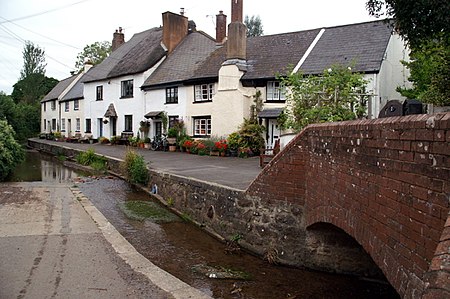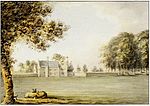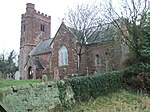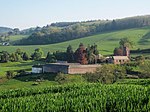Ide, Devon

Ide is a village in Devon, England, just under 1 mile (1.6 kilometres) southwest of Exeter. The village church is dedicated to the German Saint Ida of Herzfeld and was rebuilt in 1834. The majority of the village is separated from suburban Exeter by the A30 dual carriageway. Whilst it was controversial at the time of construction, the bypass has effectively enabled Ide to maintain an independent identity. The parish boundaries extend a short distance over the A30 and several notable buildings within the parish, including Ide House and the Twisted Oak pub, are located on the Exeter side. The village has two pubs: the Poacher's Inn and the Huntsman Inn. To the northwest of the village at College Lane, a ford crosses the Fordland Brook. Above Ide on a hilltop at SX8888 is the site of a Roman fortlet or signal station. Ide Halt railway station on the G.W.R. Teign Valley Line opened in 1903 and closed to passengers on 9 June 1958. The station site was re-developed as St Ida's Close and no trace of the railway now remains. Ide had a population of 526 in 2011 and decreased to 510 in 2014.
Excerpt from the Wikipedia article Ide, Devon (License: CC BY-SA 3.0, Authors, Images).Ide, Devon
Teignbridge
Geographical coordinates (GPS) Address Nearby Places Show on map
Geographical coordinates (GPS)
| Latitude | Longitude |
|---|---|
| N 50.7 ° | E -3.5666666666667 ° |
Address
EX2 9TG Teignbridge
England, United Kingdom
Open on Google Maps











